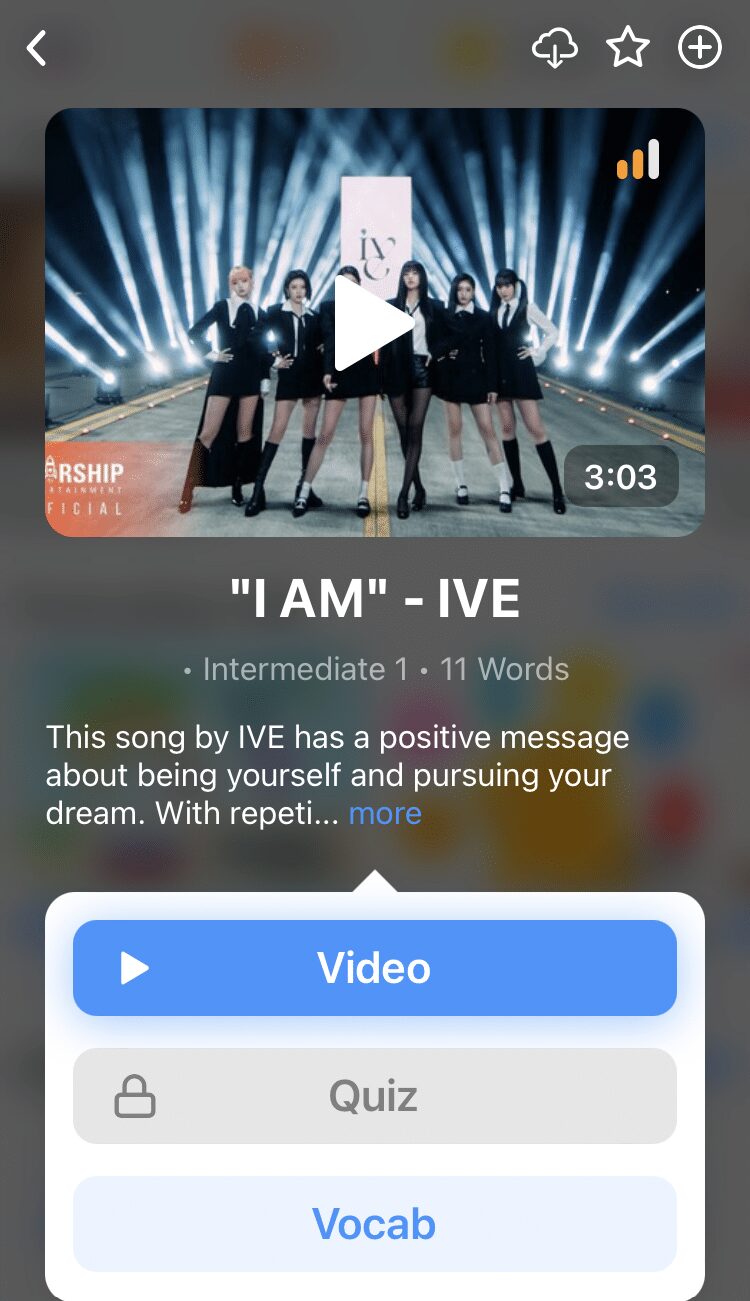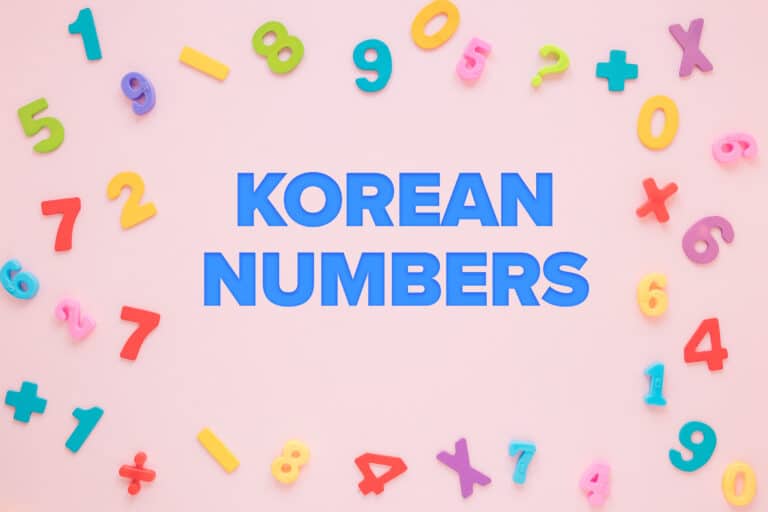Contents
- The Significance of Family in Korean Culture
- Using Titles (Not Names!) for Your Family
- Family Members in Korean
- How to Practice Korean Family Vocabulary
- And One More Thing...
How to Talk About Family in Korean

With big families, it’s always a struggle to remember everyone’s name.
Of course, we have our “brother-in-law” and “second cousin once removed” business in English. But what about titles that depend on the age of the relative? Or even different ways to refer to your relatives based on your gender?
That’s the confusing world of naming Korean family members. Let’s dive in.
Download: This blog post is available as a convenient and portable PDF that you can take anywhere. Click here to get a copy. (Download)
The Significance of Family in Korean Culture
Family in Korean is 가족 (ga-jok).
Like many other Asian cultures, traditional Korean culture places special significance on the family.
Because of Confucian principles, elder family members are expected to be treated with a certain reverence. This is shown in different ways, from changing your manner of speaking and checking your sentence grammar, to making sure elders go first during certain activities (such as partaking in a meal).
In Korean society, family is considered a collective, and each member is seen to represent more than just him or herself.
Using Titles (Not Names!) for Your Family
Korean Titles and Honorifics
The Korean language generally doesn’t use actual names for family members.
When people are talking to someone they’re less acquainted with, or to someone who is their superior in some way, they often give them a title. These are honorifics: titles that replace the usage of actual names in order to express an understanding of one’s social position.
Honorifics are just another part of the layered etiquette system in Korean culture. Sometimes honorifics aren’t given to those who are your junior, although courtesy may incline you to do so in different situations.
Before we go any further, let’s check out this video on Korean honorifics:
When to Use Names
If names are to be added to honorifics, then they’d be the surname, which would go before the honorific. This is often done by older individuals speaking to those who are close in age to them. For example, if you are speaking to a 김정후 (Kim Jung-hoo), you may refer to him as 김씨 (Kim ssi), not 정후 씨.
However, in other contexts, addressing someone in this manner can come off as demeaning or act as a curt social position check, a bit like how in English we’d emphasize a “Mr.” or “Mrs. / Ms.” to get at someone’s attention and keep them in line.
While an older sibling may refer to their younger sibling by their name, it’d be quite a surprise if a younger sibling suddenly spoke to their elder brother or sister by their real name sans honorific. It could be quite messy if you did this with your parent or grandparent.
Honorifics act as courtesy markers and show that you understand who deserves respect. Within the family, remembering the correct title is a social expectation. Somewhat unfortunately, there are quite a lot of specific titles to remember!
Family Members in Korean
Family ( 가족 , ga-jok)
집안 (jib-an) — immediate family living in the same house
친척 (chin-cheok) — relatives
혈족 (hyeol-jok) — blood relatives
가족 구성원 (ga-jok gu-seong-won) — family member
Children ( 아이들 , ah-ee-deul)
아들 (a-deul) — son
딸 (ddal) — daughter
자식 (ja-sik) — child / children
아이 (ah-ee) — child (one)
아기 (a-gi) — baby
꼬마 (kko-ma) — little one
맏이 (ma-jji) — eldest child
중간 자녀 (jung-gan-ja-nyeo) — middle child
막내 (mak-nae) — youngest child
Parents ( 부모 , bu-mo)
어머니 (uh-muh-ni) / 엄마 (uhm-ma) — mother / mom
아버지 (ah-buh-ji) / 아빠 (ah-ppa) — father / dad
부모님 (bu-mo-nim) — one’s own parents (formal)
These terms apply to both biological and in-law parents, although there are specific terms to point out parents-in-law when you’re speaking about them.
Great-Grandparents ( 조부모 , jo-bu-mo)
할아버지 (ha-ra-buh-ji) — paternal grandfather
할머니 (hal-muh-ni) — paternal grandmother
외할아버지 (oe-hal-a-buh-ji) — maternal grandfather
외할머니 (oe-hal-muh-ni) — maternal grandmother
To be more formal when addressing your grandparents, you can add a 님 to the end, such as 할아버님 or 할머님 .
What about for great-grandparents? Here are the Korean terms:
증조부모 (jeung-jo-bu-mo) — great-grandparents
증조할아버지 (jeung-jo-hal-a-beo-ji) — paternal great-grandfather
증조할머니 (jeung-jo-hal-meo-ni) — paternal great-grandmother
외증조할아버지 (oe-jeung-jo-hal-a-beo-ji) — maternal great-grandfather
외증조할머니 (oe-jeung-jo-hal-meo-ni) — maternal great-grandmother
Spouses ( 배우자 , beh-oo-ja)
부부 (bu-bu) — a married couple / husband and wife
남편 (nam-pyun) — husband
아내 (ah-neh) — wife
부인 (bu-in) — wife (formal)
배우자 (bae-u-ja) — spouse
These are what you’d call your spouses when you’re talking about, not with, them. Normally, Korean couples refer to each other with other terms of endearment or pet names.
One of these terms is 여보 (yuh-bo) which essentially translates to “darling” or “sweetheart.” This term is used exclusively by married couples. If a younger or unmarried couple uses this term, they’re trying to be cutesy or pretending to be married.
Another common term of endearment is 당신 (dang-shin), which basically means “you.” However, take note: this term should only be used to directly address a spouse. If you use it to mean “you” in any other context, it can be seen as offensive.
When you’re talking about other people’s spouses, these are polite terms to use:
아내분 (a-nae-bun) — wife
남편분 (nam-pyeon-bun) — husband
If a couple is already engaged (but not married yet), there are titles for that, too:
약혼자 (yak-hon-ja) — fiancé / fiancée (neutral term)
약혼녀 (yak-hon-nyeo) — fiancée
약혼남 (yak-hon-nam) — fiancé
Siblings ( 형제자매 , hyeong-je-ja-mae)
형 (hyung) — older brother for male
오빠 (o-ppa) — older brother for female
누나 (nu-na) — older sister for male
언니 (un-ni) — older sister for female
남동생 (nam-dong-seng) — younger brother
여동생 (yuh-dong-seng) — younger sister
자매 (ja-mae) — sisters
형제 (hyeong-je) — brothers
남매 (nam-mae) — brother and sister
Here’s our first look at how honorifics will differ based on the gender of the speaker.
If you’re at all familiar with Korean drama shows, or K-dramas, you probably already know these constraints. Unless jokingly, a Korean girl wouldn’t call her older brother 형 or a Korean boy call his older sister 언니.
These honorifics are also usable for non-blood-related individuals if they’re close enough to you. Nowadays, they can also be used flirtatiously.
For the younger siblings, note that 동생 itself means “younger sibling” and has no single gender attached to it, so you can actually just refer to your younger sibling with 동생 if the gender distinction isn’t necessary. The character before it denotes the gender of the sibling: 남 for boy originates from 남자 (nam-ja, “man/boy”) and the 여 from 여동생 originates from 여자 (yuh-ja, “lady/girl”).
Siblings’ Spouses
If you’re male, use:
형수님 (hyung-soo-nim) — older brother’s wife
매형 (meh-hyung) — older sister’s husband
제수씨 (je-su-ssi) — younger brother’s wife
매제 (meh-je) — younger sister’s husband
If you’re female, use:
새언니 (seh-un-ni) — older brother’s wife
형부 (hyung-bu) — older sister’s husband
올케 (ol-kke) — younger brother’s wife
제부 (je-bu) — younger sister’s husband
Yes, the gender distinctions in sibling titles still apply for your siblings-in-law! If you’re close enough to them, you can just address them with the typical sibling titles without the specifying preceding character.
If you’re feeling overwhelmed, don’t worry: most Koreans aren’t even familiar with these terms, especially younger Koreans. They’re good to know, but it’s okay if you can’t keep them straight.
Extended Family ( 대가족 , dae-ga-jok)
사촌 (sa-chon) — cousin (can be addressed generally with the standard sibling titles listed above)
사촌형 (sa-chon-hyung) — male cousin (older than you)
사촌동생 (sa-chon-dong-saeng) — male cousin (younger than you)
사촌누나 (sa-chon-nu-na) — female cousin (older than you)
사촌여동생 (sa-chon-yeo-dong-saeng) — female cousin (younger than you)
조카 (jo-ka) — nephew / niece
조카아들 (jo-ka-a-deul) — nephew
조카딸 (jo-ka-ddal) — niece
손자 (son-ja) — grandson
손녀 (son-nyuh) — granddaughter
손주 (son-ju) — grandchildren
Paternal Side ( 친가 , chin-ga)
고모 (go-mo) — aunt / father’s sister (younger or older)
고모부 (go-mo-bu) — uncle / aunt’s husband
고모 부부 (go-mo-bu-bu) — aunt and uncle (father’s sister and her husband)
삼촌 (sam-chon) — uncle / father’s brother (younger and unmarried)
작은아버지 (jag-eun-ah-buh-ji) or 작은 아빠 (jag-eun ah-ppa) — uncle / father’s brother (younger, usually married)
큰아버지 (keun-ah-buh-ji) or 큰아빠 (keun-ah-ppa) — uncle / father’s brother (older, unmarried or married)
숙모 (sook-mo) — aunt / father’s brother’s wife (generalized). To specify:
큰어머니 (keun-uh-muh-ni) or 큰엄마 (keun-uh-ma) — aunt / father’s older brother’s wife
작은어머니 (jag-eun-uh-muh-ni) or 작은엄마 (jag-eun-uhm-ma) — aunt / father’s younger brother’s wife
As a quick note: these are the words you’d use as the child of your mother and father. As a child, you’d call your father’s side of the family 친가, but your mother can refer to her own family as 친가 as well, whereas you’d say 외가 for the same group of people. Keep that in mind!
When talking about your father’s brothers, one would normally attach Korean ordinal numbers to the title, which designate their order in age.
For example, the very eldest paternal uncle would be 큰아버지, the second eldest paternal uncle would be called 둘째 큰아버지 , the third eldest 셋째 큰아버지 and so on.
This also applies to your father’s younger brothers, though you’d use 작은아버지 instead of 큰아버지.
If you’re wondering why this special treatment exists specifically for the male portion of the paternal side, part of it is likely due to those traditional Confucian principles mentioned before, which also put an emphasis on the role of the man within the family.
Maternal Side ( 외가 , oe-ga)
이모 (ee-mo) — aunt / mother’s sister
이모부 (ee-mo-bu) — uncle / mother’s sister’s husband
이모 부부 (ee-mo-bu-bu) — aunt and uncle (mother’s sister and her husband)
외삼촌 (oe-sam-chon) — uncle / mother’s brother (age not relevant)
외숙모 (oe-sook-mo) — aunt / mother’s brother’s wife
In-laws ( 사돈 , sa-don)
사위 (sa-wi) — son-in-law
surname of son-in-law + 서방 (suh-bang) — son-in-law (when directly addressed)
며느리 (myuh-neu-ra) — daughter-in-law (when speaking about her to someone else)
애기야 (eh-gi-ya) — daughter-in-law (when directly addressed)
Husband’s Side
These are the terms that a wife would use to refer to her in-laws.
Husband’s Parents:
시아버지 (shi-ah-buh-ji) — husband’s father / wife’s father-in-law (general)
시어머니 (shi-uh-muh-ni) — husband’s mother / wife’s mother-in-law (general)
아버님 (ah-buh-nim) — husband’s father / wife’s father-in-law (formal)
어머님 (uh-muh-nim) — husband’s mother / wife’s mother-in-law (formal)
When you’re talking to your parents-in-law, you’d still refer to them with the standard 어머니 or 아버지, although you’d probably tack on the more formal 님 to show more respect.
Husband’s Siblings:
도련님 (do-ryun-nim) — husband’s younger, unmarried brother
시동생 (si-dong-saeng) — husband’s younger, married brother (general)
아주버님 (ah-ju-buh-nim) — husband’s older brother (This also means the husband of a husband’s older sister.)
형님 (hyung-nim) — husband’s older sister or husband’s older brother’s wife
동서 (dong-suh) — husband’s younger brother’s wife
아가씨 (ah-ga-ssi) — husband’s younger sister
서방님 (suh-bang-nim) — husband’s younger, married brother / husband’s sister’s husband (서방님 may also be used to just mean “husband.”)
Wife’s Side
These are the terms that a husband would use to refer to his in-laws.
Wife’s Parents:
장인 (jang-in) — wife’s father / husband’s father-in-law (general)
장모 (jang-mo) — wife’s mother / husband’s mother-in-law (general)
장인어른 (jang-in-eo-reun) — wife’s father / husband’s father-in-law (formal)
장모님 (jang-mo-nim) — wife’s mother / husband’s mother-in-law (formal)
Again, you’d probably address your wife’s in-law parents with the standard 어머니 or 아버지 with the addition of 님 for respect.
Wife’s Siblings:
처남 (chuh-nam) — wife’s younger brother
형님 (hyung-nim) — wife’s older brother
동서 (dong-suh) — wife’s sister’s husband
처제 (chuh-je) — wife’s younger sister
처형 (chuh-hyung) — wife’s older sister
사돈 is a term commonly used by older generations to refer to in-laws, and it can be used for when you’re not speaking to your family. It can come off as rude if, say, a son-in-law addressed his in-law parents directly as 사돈, so it’s recommended you don’t do so to your own in-laws.
While you’d refer to your parents-in-laws with 어머니 or 아버지, for the most part, you’d keep the titles for the siblings as-is whether you’re a wife or husband.
How to Practice Korean Family Vocabulary
It can feel dizzying to keep all of this Korean family vocabulary straight. But it doesn’t have to be that way!
To learn and practice family vocabulary, it’s a great idea to immerse yourself in real Korean media like Korean movies, K-dramas and podcasts. These authentic learning materials will show you how native Korean speakers refer to their family members, while also teaching you about the dynamics of Korean families.
There are also programs that combine authentic Korean media with language study tools, such as FluentU.
FluentU takes authentic videos—like music videos, movie trailers, news and inspiring talks—and turns them into personalized language learning lessons.
You can try FluentU for free for 2 weeks. Check out the website or download the iOS app or Android app.
P.S. Click here to take advantage of our current sale! (Expires at the end of this month.)
Family roles are extremely important in Korean culture, so as you keep immersing yourself, the most important vocabulary will stick with you!
If you’re wondering: yes, even Korean people struggle to remember all of these titles! Because of the breadth and specificity of Korean family terminology, you’ll easily impress natives if you’re savvy about which family member receives which title.
Learn all of this, and you’ll fit right in with a Korean 가족 (family)!
Download: This blog post is available as a convenient and portable PDF that you can take anywhere. Click here to get a copy. (Download)
And One More Thing...
If you enjoyed this post, you're already halfway to having the time of your life learning Korean with FluentU!
FluentU makes it possible to learn with K-pop videos, funny commercials, entertaining web series and more. Just a quick look will give you an idea of the variety of FluentU videos on offer:

FluentU really takes the grunt work out of learning languages, leaving you with nothing but engaging, effective and efficient learning. It's already hand-picked the best videos for you (which are organized by level and topic), so all you have to do is simply choose any video that strikes your fancy to get started.
Each word in the interactive captions comes with a definition, audio, image, example sentences and more.

Access a complete interactive transcript of every video under the Dialogue tab, and easily review words and phrases from the video under Vocab.

You can use FluentU’s unique Quiz Mode to learn the vocabulary and phrases from the video through fun questions.

FluentU keeps track of what you're learning, and tells you exactly when it's time for review, giving you a 100% personalized experience.
Review sessions use video context to help embed the words in your memory.
Start using the FluentU website on your computer or tablet or, better yet, download the FluentU app from the iTunes or Google Play store. Click here to take advantage of our current sale! (Expires at the end of this month.)








